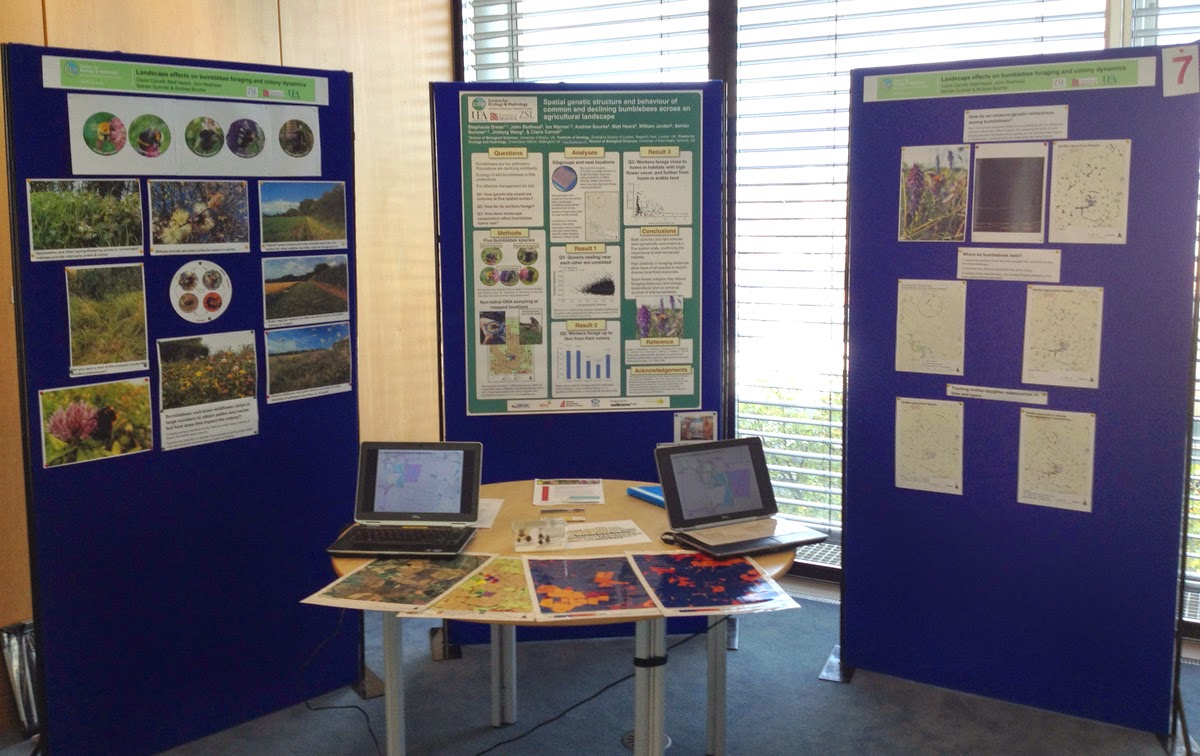Dr Juliette Young from the Centre for Ecology & Hydrology was on Radio 4 earlier this week, being interviewed for the
Shared Planet programme. This week’s episode looked at conflicts between people over wildlife and following the programme there has been a reasonable amount of online discussion of the issues raised, including a
piece by former RSPB Conservation Director Mark Avery.
One of the examples discussed during the recording was the conflict in a number of areas of the British Isles between hen harrier conservation interests and land management for grouse shooting.
Dr Young’s comments in the programme built on research she and colleagues have carried out over the past ten years working on conflicts and stakeholder involvement in biodiversity conservation (e.g. Young et al., 2005, 2007, 2010; Redpath et al., 2013). The work involves speaking to a wide range of stakeholders with different perspectives on conflicts, including government advisers, scientists, conservation NGOs and land managers, including gamekeepers, who often feel portrayed by the media and other stakeholders in a negative light, despite their belief that their management can be beneficial to a variety of species.
Dr Young said, “I sincerely hope that a solution can be found to ensure the conservation of hen harriers and other protected species. Whilst I condemn illegal activities against protected species my research has examined how, why and in which contexts conflicts emerge, and aims to analyse how shared understanding and solutions can be found. My research therefore reflects a wide range of different interests and values, all of which need to be understood to navigate through complex conservation conflicts.”
Dr Young’s research has shown that conflicts can be managed effectively through dialogue among all relevant stakeholders and this can lead to shared solutions where different human activities, including conservation, co-exist in the managed landscape (see also Redpath et al., 2013, Young et al., 2010). During the Shared Planet recording she highlighted one good example where this approach has succeeded. When the Scottish government implemented a seal conservation order in 2002 this was a catalyst by which all the local groups felt affected and understood the need to make changes. This catalyst led to the Moray Firth Seal Management Plan (MFSMP) that focused on the need to balance seal and salmon conservation. A local champion emerged who brought all relevant stakeholders, and their knowledge, together, to seek a shared solution to the conflict (Young et al., 2012, 2013a and b).
Additional information
Dr Juliette Young is a social scientist at CEH’s site near Edinburgh, where she has been working since 2002. She initially trained as an ecologist at the University of London (BSc) and University of Leeds (MSc), spent time rehabilitating chimpanzees in Sierra Leone and chasing fig wasps in the Cook Islands before joining CEH. She has a PhD in political science. Her current work focuses on four main areas:
- public attitudes towards biodiversity, including views on how it should be or is managed, and the values associated with biodiversity.
- the communication between scientists and decision-makers.
- the understanding of human conflicts over nature conservation.
- the role of stakeholder engagement in nature conservation, particularly in the context of protected areas and species.
References
Young, J., Jordan, A., Searle, K.R., Butler, A., Simmons, P. 2013a.
Framing scale in participatory biodiversity management may contribute to more sustainable solutions. Conservation Letters 6(5): 333-340.
Young, J., Jordan, A., Searle, K.R., Butler, A., Chapman, D., Simmons, P., Watt, A.D. 2013b.
Does stakeholder involvement really benefit biodiversity conservation? Biological Conservation 158: 359-370.
Redpath, S., Young, J., Evely, A., Adams, W.M., Sutherland, W.J., Whitehouse, A., Amar, A., Lambert, R., Linnell, J., Watt, A.D. 2013.
Understanding and managing conflicts in biodiversity conservation. Trends in Ecology and Evolution 28(2): 100-109.
Young, J., Butler, J.R.A., Jordan, A., Watt, A.D. 2012.
Less government intervention in biodiversity management: Risks and opportunities. Biodiversity and Conservation 21(4): 1095-1100.
Young, J., Marzano, M., White, R.M., McCracken, D.I., Redpath, S.M., Carss, D.N., Quine, C.P., Watt, A.D. 2010.
The emergence of biodiversity conflicts from biodiversity impacts: characteristics and management strategies. Biodiversity & Conservation 19(14): 3973-3990.
Henle, K., Alard, D., Clitherow, J., Cobb, P., Firbank, L., Kull, T., McCracken, D., Moritz, R.F.A., Niemelä, J., Rebane, M., Wascher, D., Watt, A., Young, J. 2008.
Identifying and managing the conflicts between agriculture and biodiversity conservation in Europe – a review. Agriculture, Ecosystems & Environment 124 (1-2): 60-71.
Young, J., Richards, C., Fischer, A., Halada, L., Kull, T., Kuzniar, A., Tartes, U., Uzunov, U. and Watt, A. 2007.
Conflicts between biodiversity conservation and human activities in the Central and Eastern European Countries. Ambio 36(7): 545-550.
Young, J., Watt, A., Nowicki, P., Alard, D., Clitherow, J., Henle, K., Johnson, R., Laczko, E., McCracken, D., Matouch, S., Niemelä, J. 2005.
Towards sustainable land use: identifying and managing the conflicts between human activities and biodiversity conservation in Europe. Biodiversity and Conservation 14(7): 1641-1661.
Many scientific publications are on subscription websites. Authors may be able to send individuals full copies of their papers.




























